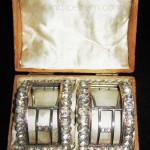Gentlemen’s tight-fitting breeches that were buttoned or buckled below the knee came into fashion c1720 and remained in use through the Regency. By the mid Regency period, pantaloons had almost completely replaced breeches for day wear. Breeches continued to be worn for very formal evening occasions until the 1820s when trousers replaced breeches for full dress. Breeches also continued to be a requirement of gentlemen’s court dress throughout the 19th century.
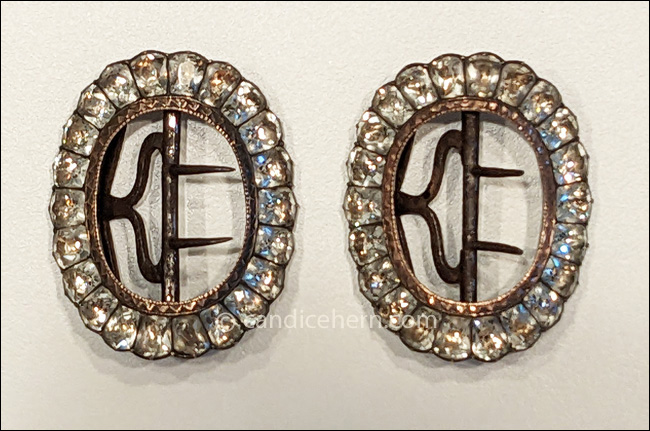
Figure 1: Pair of knee buckles with tooled pinchbeck bezels, close-set paste stones on sterling backs, and steel chapes and tongues. British c1780. Approximately 1 ¼” tall.
Breeches fastened just below the knee with ties, and buttons or buckles, or both. Many breeches had 3 or 4 buttons, and then a strap and buckle closure at the bottom. All the knee buckles in my collection are set with paste stones, which means they most likely would have been worn with evening or court dress.
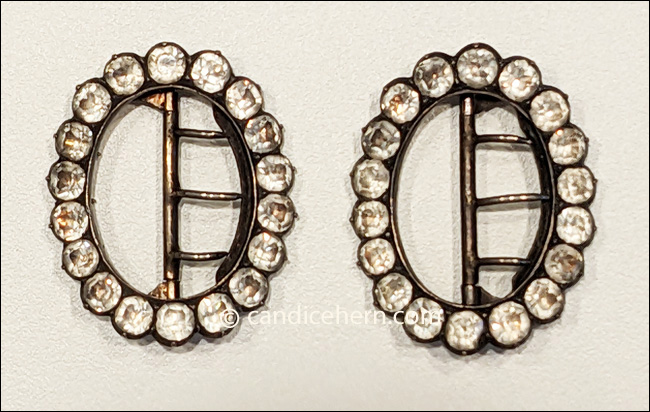
Figure 2: Pair of knee buckles with circular paste stones set on sterling mounts, with sterling chape and tongue. Probably British, c1790. 1″ tall.
Knee buckle spindles usually run lengthwise. They were fitted with an open anchor chape and a tongue that has 2 or 3 prongs.
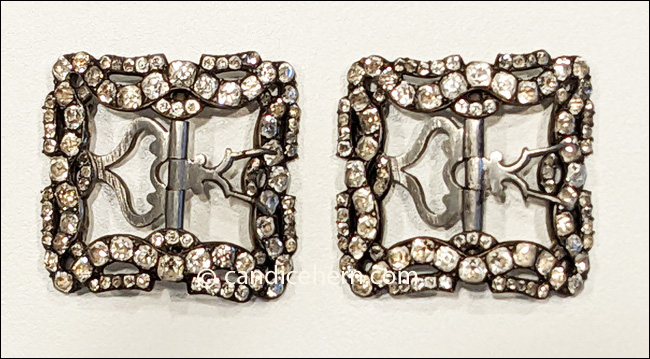
Figure 3: Pair of knee buckles in an unusual square shape, with close-set paste stones in an interlacing ribbon pattern, and sterling backings, chapes, and tongues. British c1770. Approximately 1 ¼” square.
The chape of the buckle is inserted into a buttonhole located on the strap at the bottom of the breeches. The end of the strap is slipped through, the prongs of the tongue lowered, and then the end slipped through the other side of the buckle.
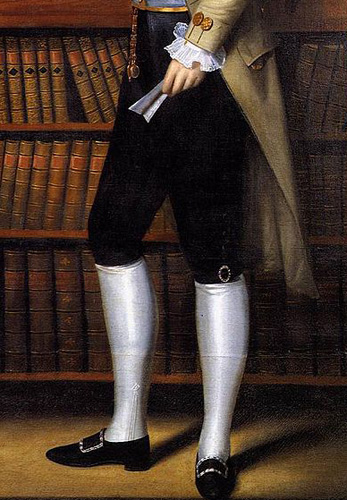
Figure 4: Detail of a portrait of Elijah Boardman by Ralph Earl, showing a paste knee buckle. American 1789. Metropolitan Museum of Art.
Knee buckles were often made in matched sets with shoe buckles. The set shown below shows the shoe buckles matching the knee buckles shown in Figure 3. They are shown in their original case. Shoe buckles often came in fitted cases, especially those with paste stones, as they were treated like jewelry. The case was specially shaped and fitted for this matched set.
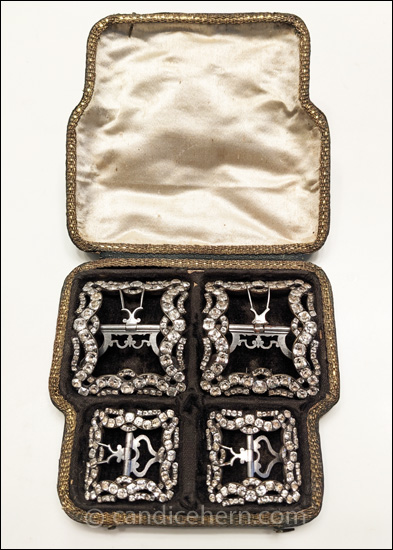
Figure 5: Matching set of paste shoe buckles and knee buckles in their original leather case lined with satin and trimmed with gold braid. British c1770.
By 1800, knee buckles were seen less often. Based on fashion prints and paintings, most breeches after that time, even with evening wear, are shown with buttons and ties. Knee buckles, especially those of silver or set with stones, continued to be worn with court dress throughout the 19th century.






